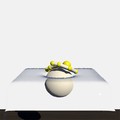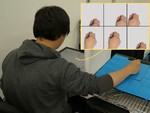Pseudo-Haptics
Projects

Pseudo-buoyancy perceptions through fluid simulation
We investigated a method for inducing pseudo-buoyancy perception when touching objects floating in liquid within a virtual environment …
Projects

Motor Prediction and Self-Attribution in Voluntary Movement
The process of self-attribution during active movement was examined from the consistency of visual, somatosensory, and motor prediction …
